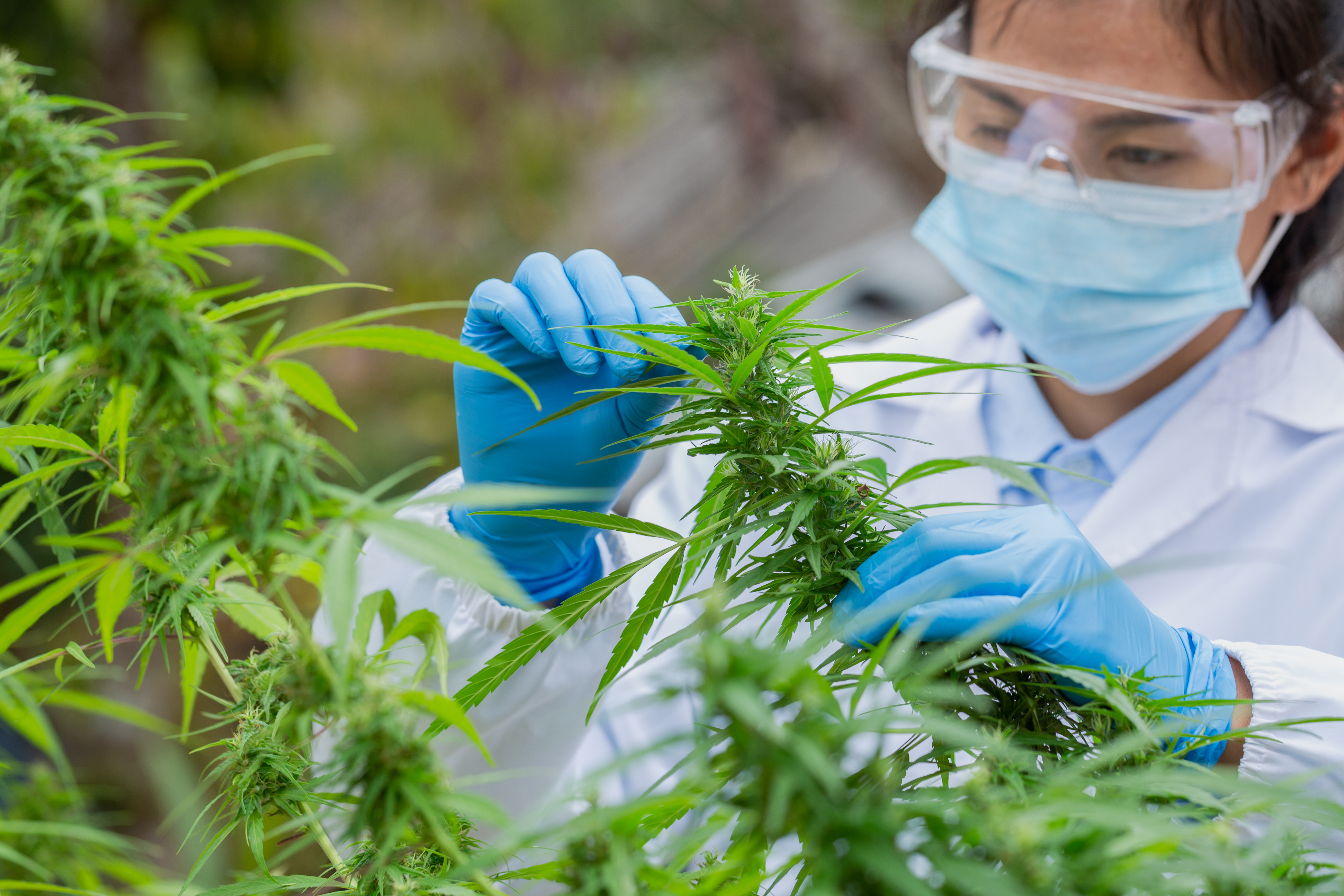Skipton-based life sciences contract research organisation Broughton is set to welcome two students from Ermysted’s Grammar School this week as part of their work experience programme, which aims to...
Supporting the Evolution of Cannabis Testing Standards: Broughton’s Collaboration with EDQM and Ph. Eur.
Cannabinoids

Jul 28, 2025 | Published by Matthew Feather
Cannabinoids, Quality
Broughton has been engaged in collaborative discussions with the European Directorate for the Quality of Medicines (EDQM) to address a known technical challenge associated with high-performance thin-layer chromatography (HP-TLC) testing for THC-dominant cannabis flower.
The current European Pharmacopoeia (Ph. Eur.) method includes a requirement for the intensity of the THC band to fall within a defined range. However, this requirement can make it difficult to classify certain fresh cannabis flower samples as THC-dominant, even when high-performance liquid chromatography (HPLC) confirms their cannabinoid composition.
Following Broughton’s submission of supporting scientific data and real-world examples, the Ph. Eur. Group has proposed a revision to the monograph. This proposed change would acknowledge that the THC band may be very faint or even absent in some valid THC-dominant flower samples. If approved, the revision will be released for public consultation in Pharmeuropa 37.4 later this year.
This collaborative outcome is a positive development for the wider medicinal cannabis sector and highlights the important role of scientific dialogue in shaping practical and appropriate regulatory frameworks.
Understanding the Issue
Cannabis flower samples typically contain a combination of cannabinoid acids (such as tetrahydrocannabinolic acid, or THCA) and their decarboxylated forms (such as THC). For THC-dominant flowers, THCA is generally the primary compound present, particularly in fresher samples.
In the HP-TLC Identification C test, reference spots are compared to the sample to identify its cannabinoid profile visually. According to the current method, the THC band in a THC-dominant sample must be of a specific minimum intensity, comparable to reference solutions. However, in fresh flower, the level of THC may be low due to limited degradation of THCA. This can result in the sample failing the method's intensity criteria for THC, even though the HPLC analysis clearly confirms it as THC-dominant.
This misalignment between method expectations and actual sample chemistry can present challenges for producers and testing laboratories alike.
Broughton’s Role and Engagement
As part of our ongoing work with clients in the medicinal cannabis space, Broughton identified this analytical challenge through routine testing. After verifying the issue through multiple case studies and cross-method comparisons, we shared our observations with the EDQM.
Our engagement focused on the fact that the THC band requirement did not take into account the naturally low levels of THC in fresh flower, where THCA has not yet undergone significant degradation. This is particularly relevant for quality-controlled, freshly cultivated flower entering the supply chain.
In response, the Ph. Eur. Group reviewed our submission during their most recent session and confirmed that they will recommend an update to the current method wording.
Proposed Revision
The current requirement specifies that the THC band should be “faint to equivalent.” The proposed revision updates this to:
“very faint to equivalent (may be absent)”
This adjustment better reflects the scientific and practical realities of cannabinoid expression in freshly harvested cannabis flower. It ensures that valid THC-dominant samples are not incorrectly excluded based on method-specific visual thresholds alone.
Ongoing Collaboration and Industry Benefit
The proposed monograph revision is expected to be published in Pharmeuropa 37.4, opening the consultation to wider industry feedback. The EDQM has expressed continued interest in reviewing additional samples that demonstrate the analytical observations identified by Broughton. We are currently exploring opportunities to support this next phase of work and remain committed to contributing to the development and validation of scientifically robust testing standards.
This case demonstrates the value of constructive regulatory engagement. Our goal is not only to support our clients with reliable, compliant testing, but also to help ensure that testing frameworks are based on robust, up-to-date science.
Conclusion
The evolution of cannabis testing methods is a necessary part of maintaining confidence in product quality and regulatory compliance.
Through open dialogue and shared expertise, laboratories, regulators, and industry stakeholders can work together to ensure standards remain both scientifically sound and practically applicable.
Need expert insight into analytical testing or regulatory alignment?
Contact the Broughton team to learn how we can support your cannabis testing needs and collaborate on advancing the sector’s quality standards.
.png?width=1000&height=250&name=Cannabis%20In-Process%20Testing%20Guide%20(1).png)


